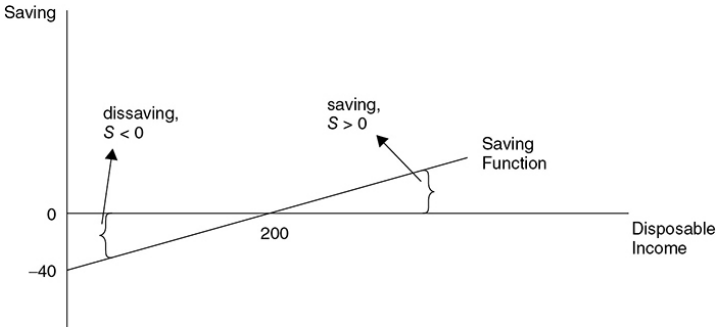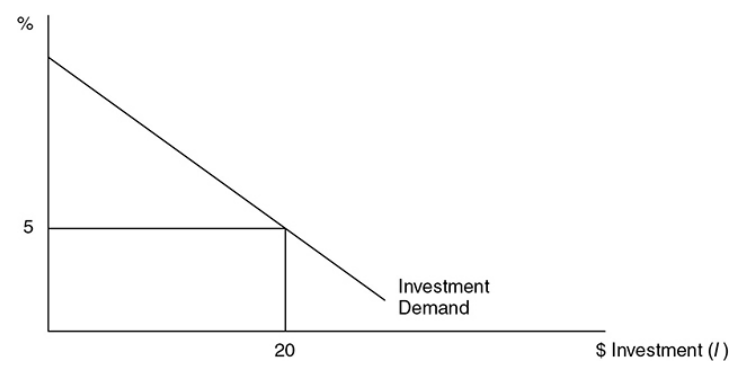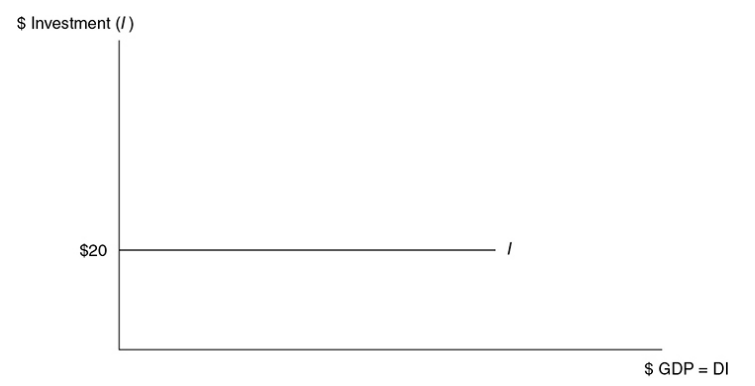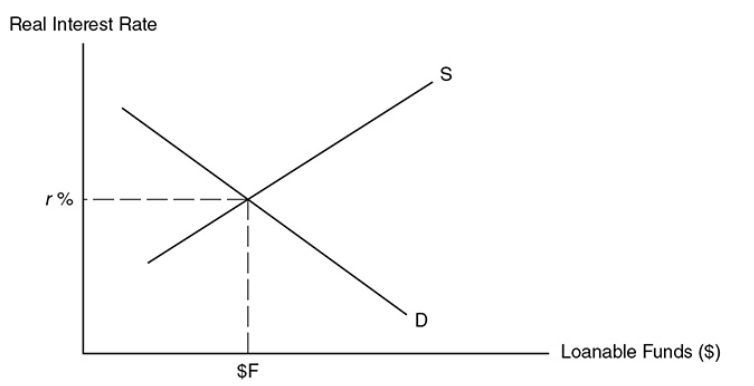Chapter 8 - Consumption, Saving, Investment, and the Multiplier
0.0(0)
0.0(0)
New
Card Sorting
1/38
Study Analytics
Name | Mastery | Learn | Test | Matching | Spaced |
|---|
No study sessions yet.
39 Terms
1
New cards
Disposable income (DI)
The income a consumer has left over to spend or save once they have paid out net taxes

2
New cards
Net taxes
Taxes paid - Transfers received
3
New cards
Consumption and saving schedules
Tables that show the direct relationships between disposable income and consumption and saving
4
New cards
Consumption function
A linear relationship showing how increases in disposable income cause increases in consumption

5
New cards
Autonomous consumption
The amount of consumption that occurs no matter the level of disposable income
6
New cards
Dissaving
Another way of saying that saving is less than zero. Can occur at low levels of disposable income when the consumer must liquidate assets or borrow to maintain consumption.
7
New cards
Saving function
A linear relationship showing how increases in disposable income cause increases in saving

8
New cards
Autonomous saving
The amount of saving that occurs no matter the level of disposable income
9
New cards
Marginal propensity to consume (MPC)
The change in consumption caused by a change in disposable income, or the slope of the consumption function

10
New cards
Marginal propensity to save (MPS)
The change in saving caused by a change in disposable income, or the slope of the saving function

11
New cards
what causes a change in disposable income
causes a movement along the consumption and savings functions.
12
New cards
Determinants of consumption and saving
Factors that shift the consumption and saving functions in the opposite direction
* wealth
* expectations
* household debt
* wealth
* expectations
* household debt
13
New cards
Wealth
When the value of accumulated wealth increases, consumption functions shift upward, and the saving function shifts downward, because households can sell stock or other assets to consume more goods at their current level of disposable income
14
New cards
Expectations
Uncertainty or a low expectation about future income usually prompts a household to decrease consumption and increase saving. An expectation of a higher future price level spurs higher consumption right now and less saving.
15
New cards
Household debt
Households can increase consumption with borrowing, or debt. However, as households accumulate more and more debt, they need to use more and more disposable income to pay off the debt and thus **decrease consumption**.
16
New cards
Taxes and transfers
* If the government increases taxes, households see both consumption and saving decrease
* an increase in government transfer payments increases both consumption and saving functions.
* an increase in government transfer payments increases both consumption and saving functions.
17
New cards
upward shift in consumption
at all levels of disposable income, consumption is greater
* If consumption is greater at all levels of disposable income, saving must be lower and vice versa.
* If consumption is greater at all levels of disposable income, saving must be lower and vice versa.
18
New cards
in tax and transfers, when the consumption function shifts upward, the saving function shifts downward.
the saving function shifts downward.
19
New cards
in tax and transfers, when the consumption function shifts downward
the saving function shifts upward.
20
New cards
when taxes increase or transfers decrease
both consumption and saving functions shift downward.
21
New cards
when taxes decrease or transfers increase
both consumption and saving functions shift upward.
22
New cards
Decision to invest
This decision is based on marginal benefits and marginal costs. A firm invests in projects as long as r ≥ i.
23
New cards
The marginal cost of the investment
The real rate of interest (i), or the cost of borrowing
24
New cards
Expected real rate of return (r)
The rate of real profit the firm anticipates receiving on investment expenditures
25
New cards
Real rate of interest (i)
The cost of borrowing to fund an investment. This can be thought of as the marginal cost of an investment project.
26
New cards
Investment demand
The inverse relationship between the real interest rate and the cumulative dollars invested
27
New cards
Investment demand curve
Shows the inverse relationship between the interest rate and the cumulative dollars invested

28
New cards
Autonomous investment
The level of investment determined by investment demand. It is constant at all levels of GDP

29
New cards
Market for loanable funds
The market for dollars that are available to be borrowed for investment projects

30
New cards
Demand for loanable funds
The negative relationship between the real interest rate and the dollars invested and borrowed by firms and by the government
31
New cards
Supply of loanable funds
The positive relationship between the dollars saved and the real interest rate
32
New cards
Private saving
Saving conducted by households and equal to the difference between disposable income and consumption
33
New cards
supply of loanable funds source
saving and lending
34
New cards
demand of loanable funds source
investment and borrowing
35
New cards
Multiplier effect
Describes how a change in any component of aggregate expenditures creates a larger change in GDP
36
New cards
spending multiplier

37
New cards
Tax multiplier
The magnitude of the effect that a change in taxes has on real GDP

38
New cards
why is the mpc bigger than the tax multiplier
The spending multiplier begins to work as soon as there is a change in autonomous spendin, but the tax multiplier must first go through a person’s consumption function as disposable income.
39
New cards
Balanced-budget multiplier
When a change in government spending is offset by a change in lump-sum taxes, real GDP changes by the amount of the change in G; the balanced-budget multiplier is thus equal to 1